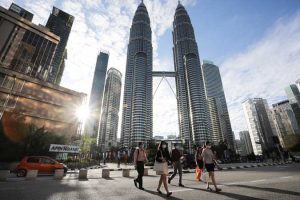The state of mass housing: The multiplier effect

(Part 3)
Given reasonable fiscal incentives under the Corporate Recovery and Tax Incentives for Enterprises (CREATE) Act, housing developers can face a very attractive mass market for affordable housing. There will be many developers who will be attracted to this industry, thus addressing government concerns about potential revenue losses from fiscal incentives extended to the developers. There will be induced economic benefits that robust private sector-driven mass housing activities or projects can bring and the real estate services that follow. From the economic activities of these downstream sectors, there will flow additional household incomes and spending of workers in the various sectors of the economy.
Government concerns about potential revenue losses from fiscal incentives extended to housing can readily be offset by the direct, indirect, and induced economic benefits that robust private sector-driven mass housing investments can bring together with the real estate services that follow. From the multiplier effects of these activities, there will be additional household income and spending of workers in the various industries or sectors that further stimulate economic activities. It is important to consider affordable housing investments of the private sector in a dynamic rather than a static manner. The economic impact of mass housing projects does not end upon the completion and successful delivery or turnover of the housing units. The impact extends to the economic activities of the communities that these projects would create that further stimulate more income and employment in the communities concerned.
Through an input-output analysis, it was shown that mass housing construction activities and real estate services have upstream and downstream linkages which are stimulated every time these sectors are activated. Mass housing construction activities have stronger linkages with their upstream than their downstream components. This means that upstream suppliers along the value chain tend to benefit more than the downstream sectors. In contrast, real estate services have stronger linkages with their downstream components than the industries found upstream. Additional livelihoods are generated from the activities of these two related sectors. The employment multiplier per P1 billion spending in mass housing generates a total of 1,558 jobs, comprising 617 direct, 454 indirect, and 487 induced. On the other hand, the employment multiplier per P1 billion spending in real estate services generates a total of 747 additional jobs comprising 195 direct, 325 indirect, and 227 induced.
Properly incentivized, the mass housing sector can make a significant contribution to the recovery of the economy from the pandemic-induced economic slowdown. As of 2020, the housing backlog was estimated at 8.4 million households or 34% of the 24.7 million households in the Philippines in 2018. Adding the segment of about 3.3 million low-income households that cannot afford housing, this translates to 47% of total household in 2018. This aptly mirrors the Philippine Statistics Authority (PSA) 2015 survey on housing tenure that showed 12.7 million out of 22.9 million households (or 55%) either own or have owner-like possession of a house and lot.
The housing backlog or shortage is the result of an accumulation of deficits or housing production shortfalls failing over the years to catch up with the demand. Of the backlogs, over 2.1 million and 1.3 million units belong to the economic and low-cost housing sectors, respectively, constituting 41% of the total backlog. The average annual demand for housing outstrips the supply of housing. Using the annual average housing demand for the period 2010 to 2020 and matching it with the annual housing supply for the same period shows an average annual deficit of 518,000 units. Assuming that the maximum capacity allocated to mass housing production of 186,300 units is used during the period 2010 to 2020, the annual housing deficit would be approximately 458,000 units per annum, a potentially attractive market for developers of economic and low-cost housing.
With a debt-to-GDP ratio exceeding 60% and a fiscal deficit already at an all-time high of 8%, it is clear that the next Administration will not have the wherewithal to address the serious shortage of affordable housing. With maximum industry capacity pegged at the moment of 186,300 units, an additional housing capacity of 654,000 units is required to wipe out the deficit of 8.4 million housing units during the next 10 years. Assuming that the Government shoulders the additional capacity to fill the void of P450,000 per housing unit (the assumed cost that the Department of Human Settlements and Urban Development used in its National Housing and Urban Development Sector Plan), the Government would have to allocate an annual budget of at least P294.2 billion, equivalent to 6.5% of the 2021 national budget. Such a massive outlay, beyond the reach of our debt-strapped Government, is best addressed by the private housing developers. The additional fiscal revenues that the Government would forego such as VAT and income taxes from the existing economic and low-cost housing activities could easily be offset by the fiscal savings the Government would realize from not having to fund the construction of these units from the budget.
If through the fiscal incentives that will be given to the private developers, the housing back log can be addressed, there will be the additional benefits that housing brings which are not fully captured by the direct and indirect economic and financial measurements. Housing spells the well-being of people and benefits communities and society as a whole, as can be seen in Singapore, a First World country. Based on research undertaken by the Asian Development Bank, the social benefits of affordable housing are as follows: higher quality of human welfare, improved health condition, increase in the number of jobs, social development, social security, and small business development.
The community benefits of housing especially stood out in the case of the communities of Gawad Kalinga (GK) during the pandemic. As lockdowns adversely affected people’s lives, people began to realize that the school-based feeding program for children could not be implemented. Facing this predicament, the community began building a common kitchen operated by themselves, along with the support from their barangays. As of August 2021, they reported a total of 57 community kitchens serving 133 communities. Housing-based communities can easily engage in welfare programs. GK continues to provide leadership training among the youth so that they could also be future leaders of their respective communities.
Bernardo M. Villegas has a Ph.D. in Economics from Harvard, is professor emeritus at the University of Asia and the Pacific, and a visiting professor at the IESE Business School in Barcelona, Spain. He was a member of the 1986 Constitutional Commission.




